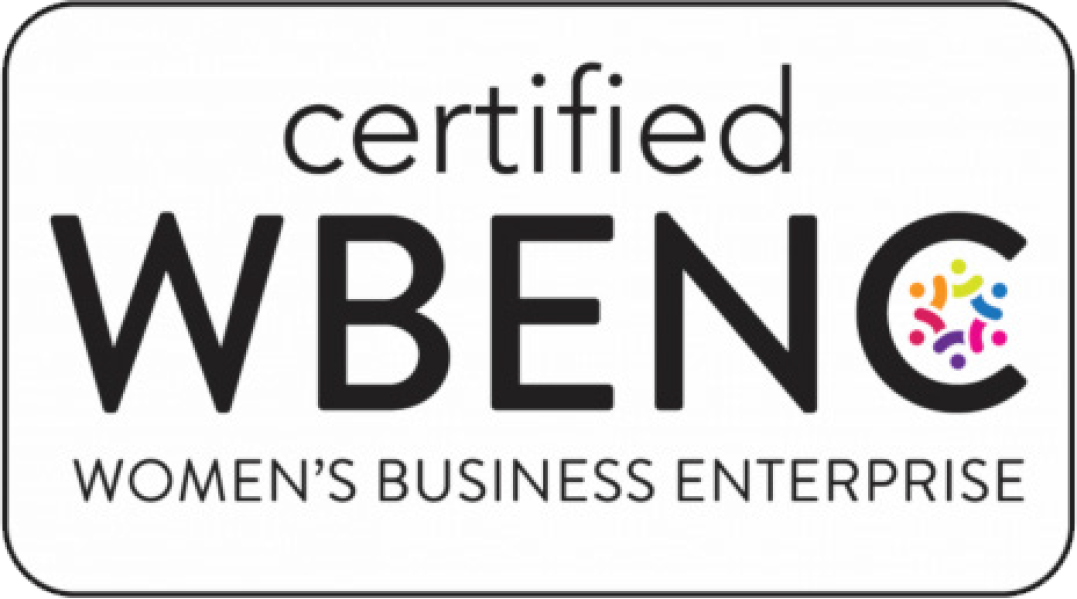Persuasive, riveting, funny or inspiring. Whatever the purpose of the video, you want it to have a big effect on your audience. For an interview-style video, great content starts with the interviewer.
As an interviewer, it’s up to you to dig for the sound bites that capture your audience’s attention.
1. A little background sets the stage.
Conduct a quick search on LinkedIn and Google so you can tailor your questions to the person’s education, background and position. Be sure you know enough about the topic to ask educated questions.
2. Outline the questions.
Jot down five to seven questions. When questions flow naturally, the interview has a more relaxed, genuine feel. Memorize them, if possible. You can always ask follow-ups or add thoughts as they occur.
3. Make small talk.
It’s never comfortable to be in front of a camera. Showing kindness creates a basis of trust. Plus, it’s just nice to be nice. To ease any anxiety, smile and shake hands. Tell your interviewee a little about yourself and ask a few casual questions before the cameras are rolling.
4. Bring a few essentials.
- A warm drink or room temperature water (cold water is bad for the throat and voice)
- Translucent face powder
- Oil absorbing wipes
5. Start with key phrases.
The interviewee feels most nervous right before recording. Talk him through it while the videographer adjusts settings.
“Our team is here to make you look good. The lights make you look awesome.”
“You and I are just having a conversation. Just ignore the camera and don’t look at it. It’s just you and me.” You can clearly see the change in demeanor as soon as you say this phrase. It’s much easier to talk to a person directly than imagine the audience through the lens of a camera.
“This isn’t live TV. You can mess up as much as you want. Just stop your sentence and start over again. No big deal.”
6. Set expectations.
“Don’t look at the camera. Just look straight at me.”
“Square your shoulders toward me.”
“It will make it easier for us later if you use the question in the answer. For instance, if I ask, ‘Why is the sky blue?’ you would say, ‘the sky is blue because…’”
Once the camera’s rolling, ask the interviewee to say and spell her first and last name and say her job title. It provides a sound check, as well as correct spelling and title for any on-screen graphics.
7. Ask easy questions first.
Get the interview rolling with a simple question like “Tell us who you are and what you do” or “How long have you been working at such-and-such?”
8. Listen quietly.
To acquire usable sound bites, the set must be quiet — and that includes you. Avoid speaking or making noises like “mm-hmm” while the interviewee speaks. Wait a couple of seconds between questions to be sure he’s finished answering.
9. Be expressive.
Instead of words or sounds, use your expressions to let her know when she is on the right track. She’ll mirror engaged and energetic body language, so be present.
10. Make comments between questions.
Give the person a chance to breathe and show you genuinely care about what he has to say by responding with your own thoughts. Demonstrate you’re not just checking the questions off your list.
11. “Can you say that again, but this time….”
It’s better to have too much footage than too little, within reason. When the interviewee says something you like but isn’t quite perfect, have her repeat it a few different ways. For instance, ask her to say it again more briefly, with more energy or with a smile.
12. Ask follow-up questions and be flexible.
A good interviewer follows her instincts. Ask the questions necessary to get the best story and follow the story wherever it leads.
13. Wait to ask the harder questions.
The tough questions can wait until you’re about ¾ through the interview. You’ll get a feeling for when he’s warmed up and relaxed. Be brave, but pleasant. He can always say he doesn’t want to answer.
14. Feed lines when necessary.
At times you’ll need the person to say something line-for-line. Though lines can sound rehearsed and disingenuous, it can be helpful, especially when interviewing children.
15. Ask the best question of all.
“Is there anything else you’d like to say?” Save this question for last. By the end of the interview, the subject trusts you, feels relaxed and is on a roll. This is the point where the interviewee will likely give the best sound bites.
An effective video grips your audience. It convinces, educates or entertains. A great interview can be the difference between a dry, talking head and a persuasive video that compels the audience to act. As the interviewer, the difference starts with you.
At WordsFresh, we believe great messages supercharge all communications. It all starts with words. Contact us about how we can help you achieve your communications goals.
Persuasive, riveting, funny or inspiring. Whatever the purpose of the video, you want it to have a big effect on your audience. For an interview-style video, great content starts with the interviewer.
As an interviewer, it’s up to you to dig for the sound bites that capture your audience’s attention.
1. A little background sets the stage.
Conduct a quick search on LinkedIn and Google so you can tailor your questions to the person’s education, background and position. Be sure you know enough about the topic to ask educated questions.
2. Outline the questions.
Jot down five to seven questions. When questions flow naturally, the interview has a more relaxed, genuine feel. Memorize them, if possible. You can always ask follow-ups or add thoughts as they occur.
3. Make small talk.
It’s never comfortable to be in front of a camera. Showing kindness creates a basis of trust. Plus, it’s just nice to be nice. To ease any anxiety, smile and shake hands. Tell your interviewee a little about yourself and ask a few casual questions before the cameras are rolling.
4. Bring a few essentials.
- A warm drink or room temperature water (cold water is bad for the throat and voice)
- Translucent face powder
- Oil absorbing wipes
5. Start with key phrases.
The interviewee feels most nervous right before recording. Talk him through it while the videographer adjusts settings.
“Our team is here to make you look good. The lights make you look awesome.”
“You and I are just having a conversation. Just ignore the camera and don’t look at it. It’s just you and me.” You can clearly see the change in demeanor as soon as you say this phrase. It’s much easier to talk to a person directly than imagine the audience through the lens of a camera.
“This isn’t live TV. You can mess up as much as you want. Just stop your sentence and start over again. No big deal.”
6. Set expectations.
“Don’t look at the camera. Just look straight at me.”
“Square your shoulders toward me.”
“It will make it easier for us later if you use the question in the answer. For instance, if I ask, ‘Why is the sky blue?’ you would say, ‘the sky is blue because…’”
Once the camera’s rolling, ask the interviewee to say and spell her first and last name and say her job title. It provides a sound check, as well as correct spelling and title for any on-screen graphics.
7. Ask easy questions first.
Get the interview rolling with a simple question like “Tell us who you are and what you do” or “How long have you been working at such-and-such?”
8. Listen quietly.
To acquire usable sound bites, the set must be quiet — and that includes you. Avoid speaking or making noises like “mm-hmm” while the interviewee speaks. Wait a couple of seconds between questions to be sure he’s finished answering.
9. Be expressive.
Instead of words or sounds, use your expressions to let her know when she is on the right track. She’ll mirror engaged and energetic body language, so be present.
10. Make comments between questions.
Give the person a chance to breathe and show you genuinely care about what he has to say by responding with your own thoughts. Demonstrate you’re not just checking the questions off your list.
11. “Can you say that again, but this time….”
It’s better to have too much footage than too little, within reason. When the interviewee says something you like but isn’t quite perfect, have her repeat it a few different ways. For instance, ask her to say it again more briefly, with more energy or with a smile.
12. Ask follow-up questions and be flexible.
A good interviewer follows her instincts. Ask the questions necessary to get the best story and follow the story wherever it leads.
13. Wait to ask the harder questions.
The tough questions can wait until you’re about ¾ through the interview. You’ll get a feeling for when he’s warmed up and relaxed. Be brave, but pleasant. He can always say he doesn’t want to answer.
14. Feed lines when necessary.
At times you’ll need the person to say something line-for-line. Though lines can sound rehearsed and disingenuous, it can be helpful, especially when interviewing children.
15. Ask the best question of all.
“Is there anything else you’d like to say?” Save this question for last. By the end of the interview, the subject trusts you, feels relaxed and is on a roll. This is the point where the interviewee will likely give the best sound bites.
An effective video grips your audience. It convinces, educates or entertains. A great interview can be the difference between a dry, talking head and a persuasive video that compels the audience to act. As the interviewer, the difference starts with you.
At WordsFresh, we believe great messages supercharge all communications. It all starts with words. Contact us about how we can help you achieve your communications goals.


